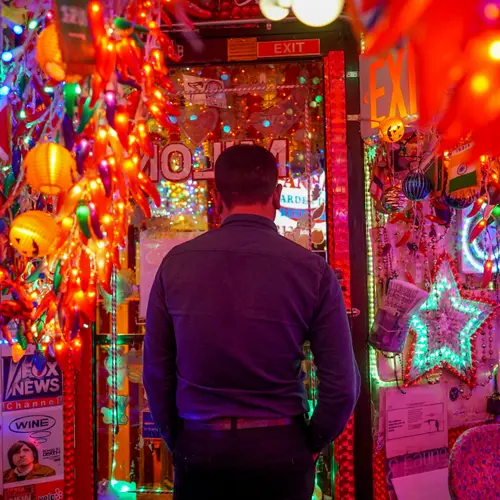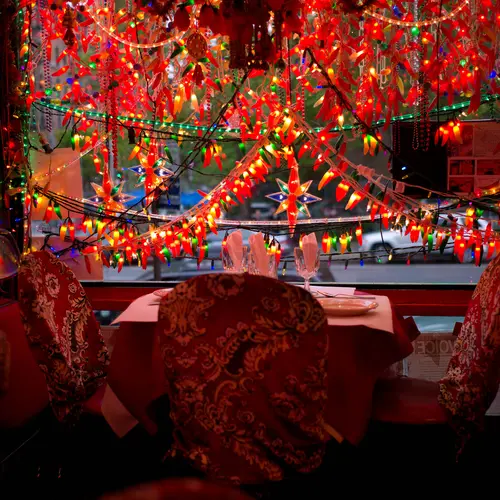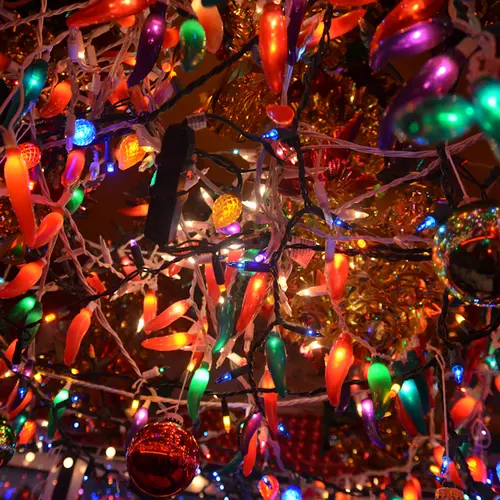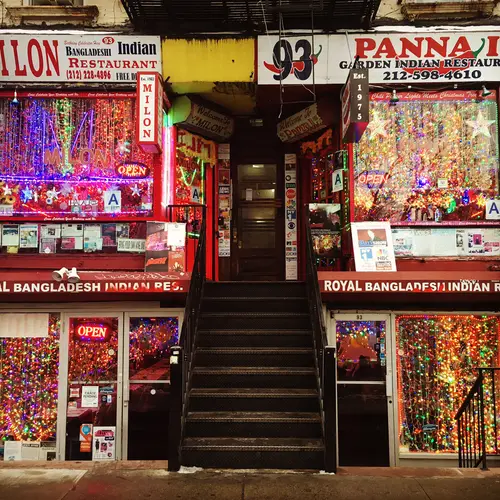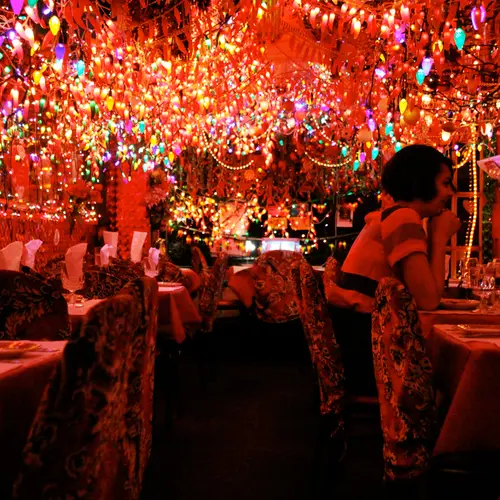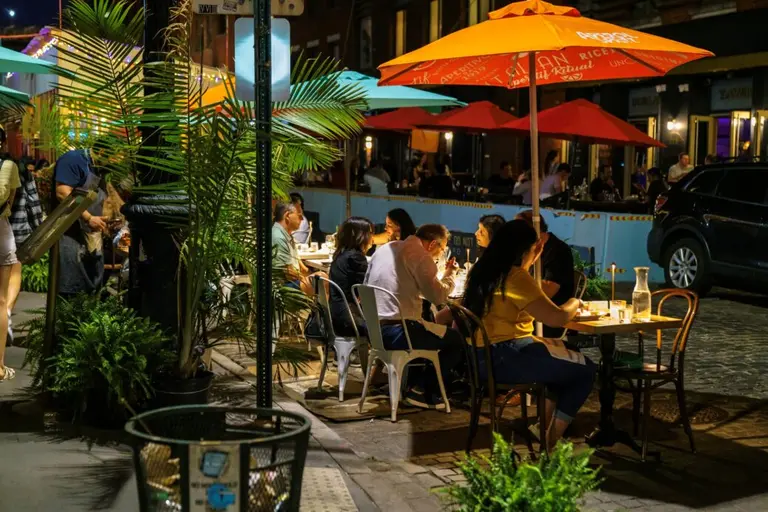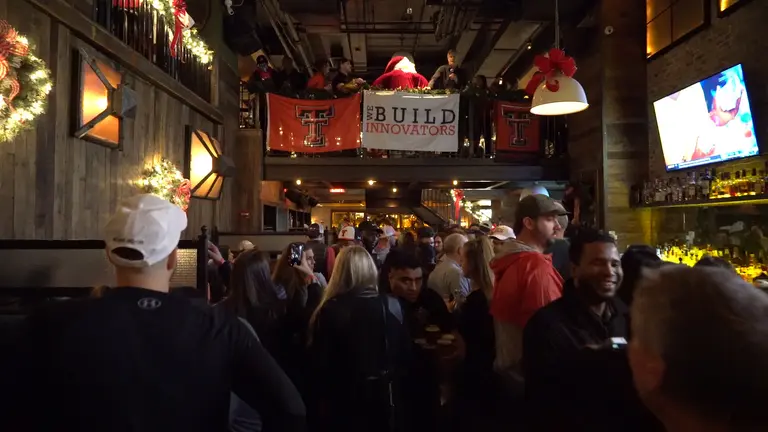Where to experience Bangladeshi culture in NYC, from the East Village to Ozone Park
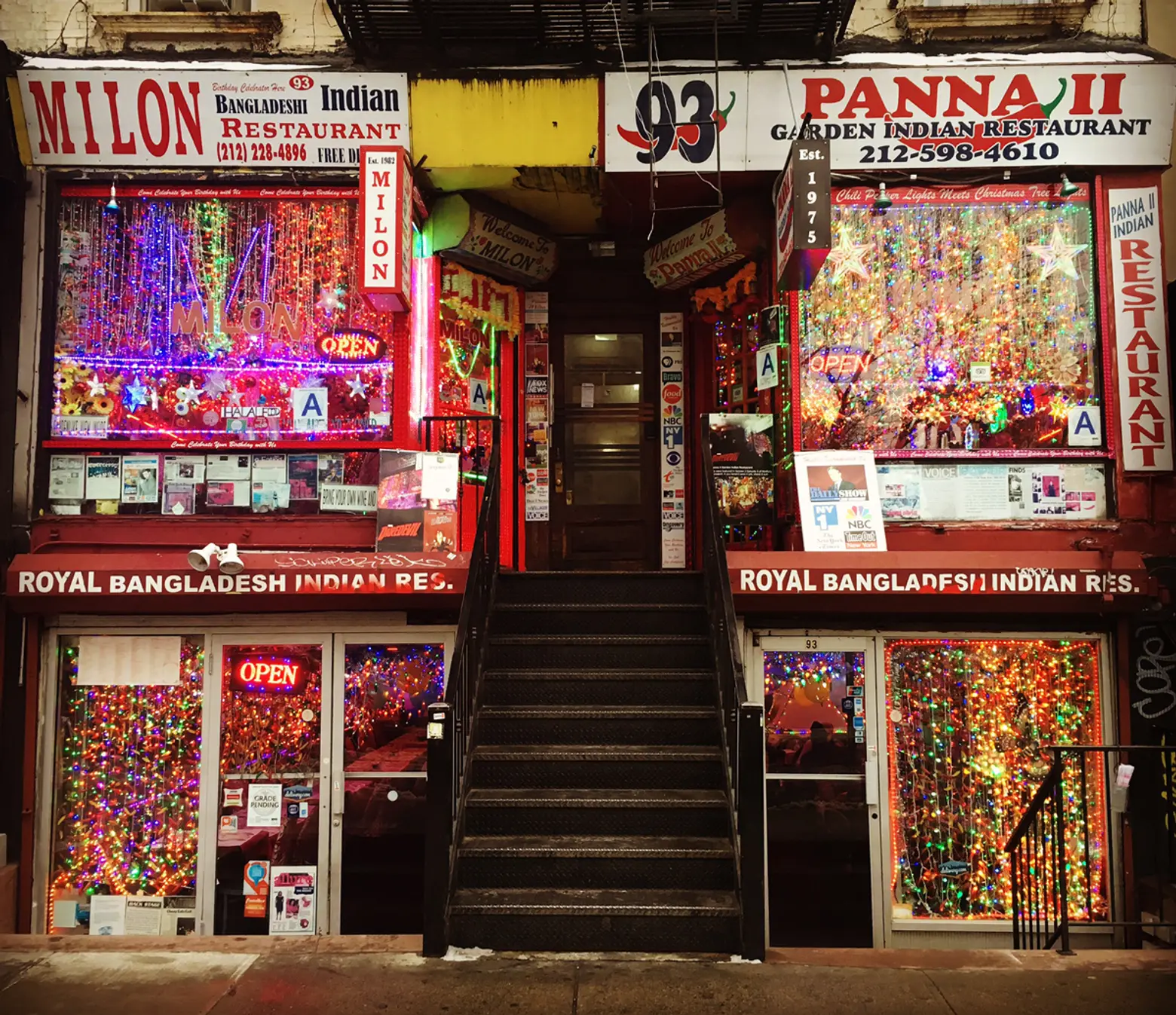
Photo by 6sqft
It’s hard to miss the two floors of flashing, chili pepper light-adorned Indian restaurants on First Avenue and Sixth Street in the East Village. The origin of these two stacked eateries, though, is much more frequently overlooked, as is the fact that the neighborhood’s adjacent “Little India” is really more “Little Bengal.” New York’s main Bangladeshi community is often cited as being in Jackson Heights, which boasts a large South Asian population and a great representation of its diverse culture, including the beloved Patel Brothers grocery store. Less well known is that East New York also has a large Bangladeshi community, and in the 1990s, the East Village’s “Curry Row” worked to identify itself as Indian, a culture more Americans at the time were familiar with. Ahead, we look at the whole history and break down the best places to experience Bangladeshi culture in NYC.
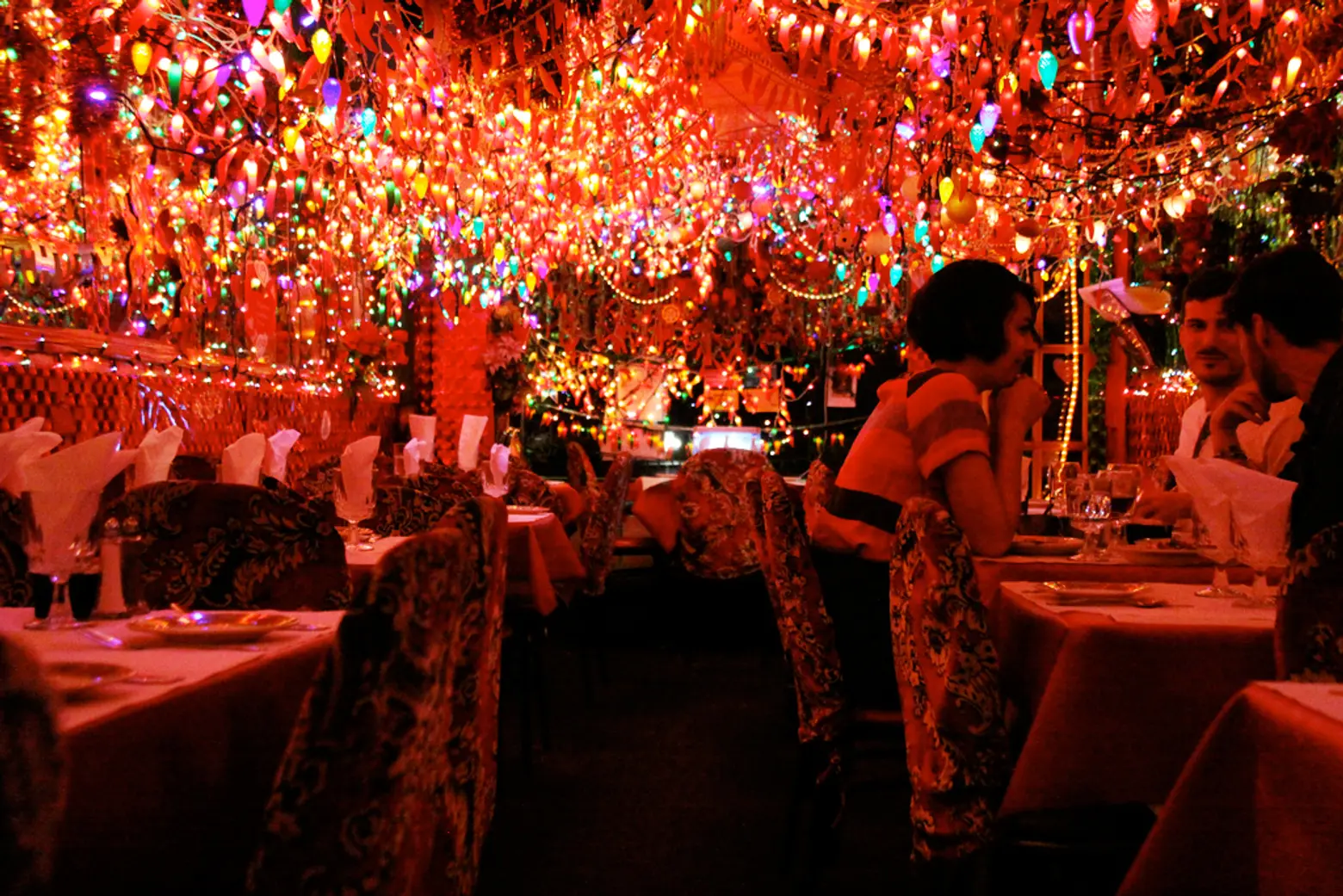 Panna II by Chris Goldberg/Flickr
Panna II by Chris Goldberg/Flickr
In the 1970s, Astoria was one of the first neighborhoods settled by Bangladeshi immigrants. But in 1968, six brothers from a portion of India which has at times been part of East Pakistan and Bangladesh came to the East Village. Missing their traditional cuisine, they bought an out-of-business Japanese restaurant on East Sixth Street for $1,800 as a place to cook their meals for themselves and friends. But before long, the aromas wafting from the little storefront started to attract passersby, and the brothers realized they had started an official restaurant. By 1979, the brothers had six spots that were operating as cooperatives, sharing the cost of imported spices, buying rice together, and exchanging chefs and waiters.
Since these restaurants served beef instead of pork, this was actually more of a Bangladeshi business than an Indian one. However, because Americans at the time were much more familiar with Indian culture and had a romanticized notion of places such as the Taj Mahal, most of the restaurants that opened along the stretch referred to themselves as Indian and took names like Gandhi that people would recognize. Shelley Mubdi, who opened Gandhi restaurant early on, said, “We didn’t even know what a tandoor was.” In fact, some estimates say that nearly ALL Indian restaurants in New York are owned by Bangladeshis.
According to the New York Times, almost all NYC immigrants from Bangladesh come from the small area of Sylhet, which is “known less for its fine cuisine (although local cooking is considered good) than for its adventurous, inventive people, quick to seize the chance to try something new.” After two political upheavals in their country–in 1947 and 1971, many Sylhetis moved to London in search of work. After finding success there, many also made the move to New York, where they opened restaurants serving a version of milky North Indian cuisine (think chicken tikka masala saag paneer) that was gaining popularity among Americans’ pallets.
At its peak in the 1990s, “Curry Row” had 30 restaurants. Today, only six restaurants and one grocery store remain, but NYC’s Bangladeshi business community continues to thrive in other corners of the city. In fact, between 1990 and 2000, NYC’s Bangladeshi population grew faster than any other Asian immigrant group in the city, from fewer than 5,000 to more than 28,000, and by 2008, it had risen to 57,000.
A more recent Bangladeshi community started to take shape in the ’80s in a small neighborhood on the Brooklyn-Queens border known as City Line. Here, immigrants from the capital city of Dhaka set up the Bangladeshi American Community Development & Youth Service, which offers local beautifications projects, sports events, and immigration services, along with eight mosques and many shops and restaurants.
To learn more and experience the culture, here are eight places to get a taste of Bangladesh in NYC, on 1st Avenue and beyond:
Milon, Panna II and Royal Bangladesh Indian Restaurant
93 1st Avenue, East Village
Royal Bangladesh Indian Restaurant, which occupies the bottom two fronts at 93 1st Avenue, opened in 1978, while Milon and Panna II, which share the upper floor, respectively opened in 1982 and 1989. The extensive, luminous decorations which define the shops began as paper flowers and evolved into the current forest of Christmas light strings. Despite the shared address, they all, in fact, have separate owners, although the enthusiastic hype men who encourage one store over another are considered by many to be a PR stunt. Their motto has become “where chili pepper lights meet Christmas tree lights.”
Dual Specialty Store
91 1st Avenue, Lower East Side
Opened in 1987 as a fish market with a small selection of spices in a corner, the Dual Specialty Store has grown its selection to more than 400 labels of beer, perfumes, teas, grains and a variety of other offerings in the decades since. Following the displacement of much of the Bengali community in the 1990s, the shop began catering more to the Indian community. In 2005, it burned down, but rebuilt and manages to maintain a historic feel.
Boishakhi Restaurant
2914 36th Avenue, Astoria
Out in Queens, Boishakhi Restaurant opened in 2015 and offers a trifecta of food styles: Indian, Pakistani, and Bangladeshi, though the last is considered extremely traditional. The buffet-style restaurant periodically pushes its tables together and cooks up a feast for dinner club guests and other clients. It’s located just down the block from the local mosque, Masjid el-Ber and received a glowing review from the Times last year.
Aladdin Sweets & Restaurant and Bonoful Asian American Grocery
36th Avenue, Astoria
Sharing the block with Boishakhi are two other South Asian shops: Aladdin Sweets & Restaurant and Bonoful Grocery. Despite its name, Aladdin Sweets offers a full menu of hearty fare in addition to dessert. Bonoful is much more of a grocery than a bodega, with a full stock of packaged South Asian options not to be found in most other local supermarkets.
Rose Bengal Food
77-01 101st Avenue, Ozone Park
Since 2011, Rose Bengal Food has been bringing Bangladeshi fare to Ozone Park. The corner shop lays claim to a variety of cuisines on its awning,
RELATED:
